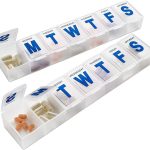The 6 Rights of Medication Administration

Patient safety is paramount in healthcare, and one critical aspect of this is the proper administration of medications. Healthcare professionals follow a set of principles known as the “6 Rights of Medication Administration” to ensure that patients receive the correct medication in the right dose, through the right route, at the right time, and with the right documentation.
The concept of the “Rights of Medication Administration” has a rich historical development rooted in the evolution of healthcare practices. Early on, medication administration lacked systematic approaches, relying on knowledge passed down through traditions and experiences. Florence Nightingale’s influence in the 19th century, emphasizing meticulous care and record-keeping, laid the groundwork for modern nursing standards.
Over the years, the increasing complexity of medications prompted a shift towards systematic approaches, culminating in the recognition of the “Five Rights” – ensuring the right patient, medication, dose, route, and time. This framework evolved to include a sixth right, documentation, emphasizing the critical role of accurate record-keeping. The global standardization of these principles by accrediting bodies reflects a commitment to patient safety and quality care, with ongoing research and education continually refining medication administration practices.
The Rights of Medication Administration has undergone significant transformation, responding to technological advances, healthcare standards, and a growing understanding of patient safety. The introduction of electronic prescribing systems and the influential “To Err is Human” report in 1999 underscored the importance of a safety culture in healthcare. The evolution from the “Five Rights” to the “Six Rights” reflects a comprehensive approach, with documentation recognized as a crucial element in ensuring transparency and accountability. Today, these rights serve as global standards, guiding healthcare professionals in their commitment to safe and effective medication administration, while ongoing research and education continue to shape and improve these practices in modern healthcare settings.
The 6 Rights of Medication Administration
Adhering to the 6 rights of medication administration is crucial for preventing medication errors, minimizing adverse reactions, and promoting positive health outcomes. These rights include;
1. Right Patient: The first and foremost consideration in medication administration is confirming the identity of the patient. This involves checking the patient’s identification bracelet, asking the patient to state their name, and comparing this information with the medication order. Verifying the patient’s identity helps prevent medication errors that could occur if medications are given to the wrong individual.
2. Right Medication: Accurate identification of the prescribed medication is imperative. Healthcare professionals must carefully check the medication label against the physician’s order to ensure that the right drug is being administered. This includes confirming the medication’s name, strength, and any specific instructions, such as extended-release formulations.
3. Right Dose: Administering the correct dosage is crucial for the effectiveness and safety of the medication. Healthcare providers must carefully calculate and measure the prescribed dose, taking into account the patient’s age, weight, and other individual factors. Double-checking the dosage before administration helps prevent under- or overdosing.
4. Right Route: Medications can be administered through various routes, including oral, intravenous, intramuscular, subcutaneous, and more. Administering a medication through the correct route is essential for its proper absorption and effectiveness. Healthcare professionals must follow the prescribed route to ensure the medication reaches the intended site in the body.
5. Right Time: Timeliness is crucial in medication administration. Medications must be given at the prescribed times to maintain therapeutic levels in the body. Deviating from the scheduled administration time can impact the medication’s efficacy, potentially leading to treatment failure or adverse reactions. Healthcare providers must adhere to the prescribed dosing schedule and promptly address any delays or missed doses.
6. Right Documentation: Accurate and thorough documentation is a key component of safe medication administration. Healthcare professionals must record each medication administration, including the drug name, dosage, route, time, and any relevant patient responses or adverse reactions. Proper documentation serves as a legal record of the care provided and facilitates communication among healthcare team members.
Conclusion
The 6 Rights of Medication Administration serves as a fundamental framework to ensure the safe and effective use of medications in healthcare settings. Healthcare professionals must be diligent in following these principles, recognizing that deviations can lead to serious consequences for patient safety. By prioritizing the right patient, medication, dose, route, time, and documentation, healthcare providers contribute to a culture of patient-centered care and reduce the risk of medication errors. Continuous education, training, and a commitment to best practices are essential for upholding these rights and promoting a safer healthcare environment.





